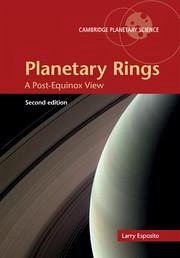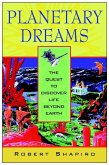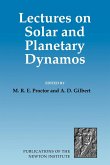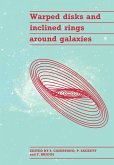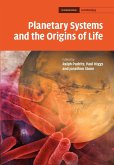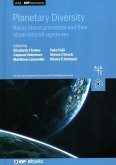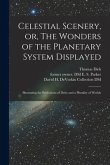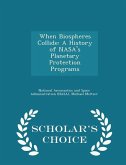Larry Esposito
Planetary Rings
Larry Esposito
Planetary Rings
- Broschiertes Buch
- Merkliste
- Auf die Merkliste
- Bewerten Bewerten
- Teilen
- Produkt teilen
- Produkterinnerung
- Produkterinnerung
Providing the latest results from the Cassini mission, this up-to-date new edition covers all aspects of planetary rings.
Andere Kunden interessierten sich auch für
![Planetary Dreams Planetary Dreams]() Robert ShapiroPlanetary Dreams15,99 €
Robert ShapiroPlanetary Dreams15,99 €![Lectures on Solar and Planetary Dynamos Lectures on Solar and Planetary Dynamos]() M. R. E. Proctor / A. D. Gilbert (eds.)Lectures on Solar and Planetary Dynamos71,99 €
M. R. E. Proctor / A. D. Gilbert (eds.)Lectures on Solar and Planetary Dynamos71,99 €![Warped Disks and Inclined Rings Around Galaxies Warped Disks and Inclined Rings Around Galaxies]() Stefano Casertano / Penny D. Sackett / Franklin H. Briggs (eds.)Warped Disks and Inclined Rings Around Galaxies48,99 €
Stefano Casertano / Penny D. Sackett / Franklin H. Briggs (eds.)Warped Disks and Inclined Rings Around Galaxies48,99 €![Planetary Systems and the Origin of Life. Edited by Ralph Pudritz, Paul Higgs, Jonathon Stone Planetary Systems and the Origin of Life. Edited by Ralph Pudritz, Paul Higgs, Jonathon Stone]() Planetary Systems and the Origin of Life. Edited by Ralph Pudritz, Paul Higgs, Jonathon Stone62,99 €
Planetary Systems and the Origin of Life. Edited by Ralph Pudritz, Paul Higgs, Jonathon Stone62,99 €![Planetary Diversity Planetary Diversity]() Planetary Diversity217,99 €
Planetary Diversity217,99 €![Celestial Scenery, or, The Wonders of the Planetary System Displayed: Illustrating the Perfections of Deity and a Plurality of Worlds Celestial Scenery, or, The Wonders of the Planetary System Displayed: Illustrating the Perfections of Deity and a Plurality of Worlds]() Thomas DickCelestial Scenery, or, The Wonders of the Planetary System Displayed: Illustrating the Perfections of Deity and a Plurality of Worlds30,99 €
Thomas DickCelestial Scenery, or, The Wonders of the Planetary System Displayed: Illustrating the Perfections of Deity and a Plurality of Worlds30,99 €![When Biospheres Collide: A History of NASA's Planetary Protection Programs - Scholar's Choice Edition When Biospheres Collide: A History of NASA's Planetary Protection Programs - Scholar's Choice Edition]() Michael MeltzerWhen Biospheres Collide: A History of NASA's Planetary Protection Programs - Scholar's Choice Edition33,99 €
Michael MeltzerWhen Biospheres Collide: A History of NASA's Planetary Protection Programs - Scholar's Choice Edition33,99 €-
-
Providing the latest results from the Cassini mission, this up-to-date new edition covers all aspects of planetary rings.
Hinweis: Dieser Artikel kann nur an eine deutsche Lieferadresse ausgeliefert werden.
Hinweis: Dieser Artikel kann nur an eine deutsche Lieferadresse ausgeliefert werden.
Produktdetails
- Produktdetails
- Verlag: Cambridge University Press
- Revised edition
- Seitenzahl: 258
- Erscheinungstermin: 1. März 2018
- Englisch
- Abmessung: 244mm x 169mm x 20mm
- Gewicht: 451g
- ISBN-13: 9781108447904
- ISBN-10: 1108447902
- Artikelnr.: 49563270
- Herstellerkennzeichnung
- Libri GmbH
- Europaallee 1
- 36244 Bad Hersfeld
- gpsr@libri.de
- Verlag: Cambridge University Press
- Revised edition
- Seitenzahl: 258
- Erscheinungstermin: 1. März 2018
- Englisch
- Abmessung: 244mm x 169mm x 20mm
- Gewicht: 451g
- ISBN-13: 9781108447904
- ISBN-10: 1108447902
- Artikelnr.: 49563270
- Herstellerkennzeichnung
- Libri GmbH
- Europaallee 1
- 36244 Bad Hersfeld
- gpsr@libri.de
Larry W. Esposito is Professor of Astrophysical and Planetary Sciences at the University of Colorado Boulder, and also the principal investigator of the Ultraviolet Imaging Spectrograph (UVIS) experiment on the Cassini space mission to Saturn. He was chair of the Voyager Rings Working Group, and, as a member of the Pioneer Saturn imaging team, he discovered Saturn's F ring. Dr Esposito has participated in numerous US, Russian and European space missions and used the Hubble Space Telescope for its first observations of the planet Venus. His awards received include the Harold C. Urey Prize from the American Astronomical Society, the NASA Medal for Exceptional Scientific Achievement, and the Richtmyer Lecture Award from the American Association of Physics Teachers and the American Physical Society. Dr Esposito has served as chair of the National Academy of Sciences Committee on Planetary and Lunar Exploration (COMPLEX), and is a Fellow of the American Geophysical Union.
Preface: a personal view of planetary rings
1. Introduction: the allure of the ringed planets
2. Studies of planetary rings 1610-2013
3. Diversity of planetary rings
4. Individual ring particles and their collisions
5. Large-scale ring evolution
6. Moons confine and sculpt rings
7. Explaining ring phenomena
8. N-body simulations
9. Stochastic models
10. Age and evolution of rings
11. Saturn's mysterious F ring
12. Uranus' rings and moons
13. Neptune's partial rings
14. Jupiter's ring-moon system after Galileo and New Horizons
15. Ring photometry
16. Dusty rings
17. Concluding remarks
Afterword
Glossary
References
Index.
1. Introduction: the allure of the ringed planets
2. Studies of planetary rings 1610-2013
3. Diversity of planetary rings
4. Individual ring particles and their collisions
5. Large-scale ring evolution
6. Moons confine and sculpt rings
7. Explaining ring phenomena
8. N-body simulations
9. Stochastic models
10. Age and evolution of rings
11. Saturn's mysterious F ring
12. Uranus' rings and moons
13. Neptune's partial rings
14. Jupiter's ring-moon system after Galileo and New Horizons
15. Ring photometry
16. Dusty rings
17. Concluding remarks
Afterword
Glossary
References
Index.
Preface: a personal view of planetary rings
1. Introduction: the allure of the ringed planets
2. Studies of planetary rings 1610-2013
3. Diversity of planetary rings
4. Individual ring particles and their collisions
5. Large-scale ring evolution
6. Moons confine and sculpt rings
7. Explaining ring phenomena
8. N-body simulations
9. Stochastic models
10. Age and evolution of rings
11. Saturn's mysterious F ring
12. Uranus' rings and moons
13. Neptune's partial rings
14. Jupiter's ring-moon system after Galileo and New Horizons
15. Ring photometry
16. Dusty rings
17. Concluding remarks
Afterword
Glossary
References
Index.
1. Introduction: the allure of the ringed planets
2. Studies of planetary rings 1610-2013
3. Diversity of planetary rings
4. Individual ring particles and their collisions
5. Large-scale ring evolution
6. Moons confine and sculpt rings
7. Explaining ring phenomena
8. N-body simulations
9. Stochastic models
10. Age and evolution of rings
11. Saturn's mysterious F ring
12. Uranus' rings and moons
13. Neptune's partial rings
14. Jupiter's ring-moon system after Galileo and New Horizons
15. Ring photometry
16. Dusty rings
17. Concluding remarks
Afterword
Glossary
References
Index.

